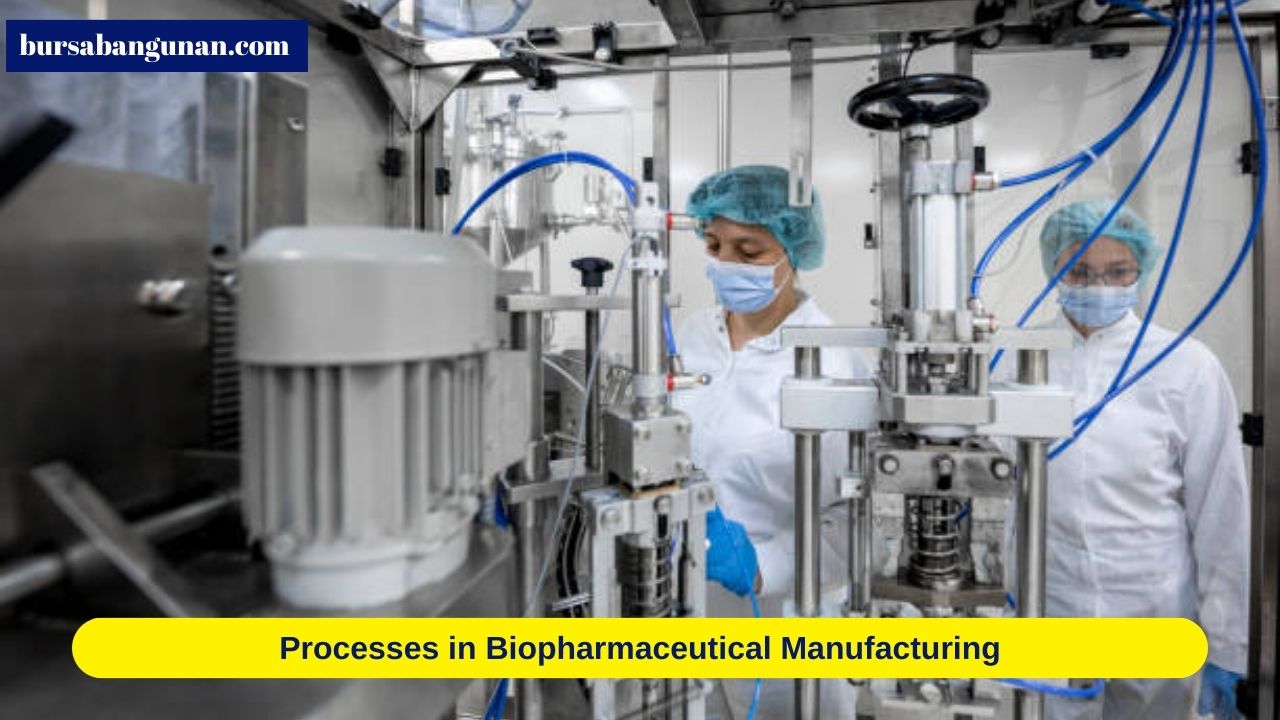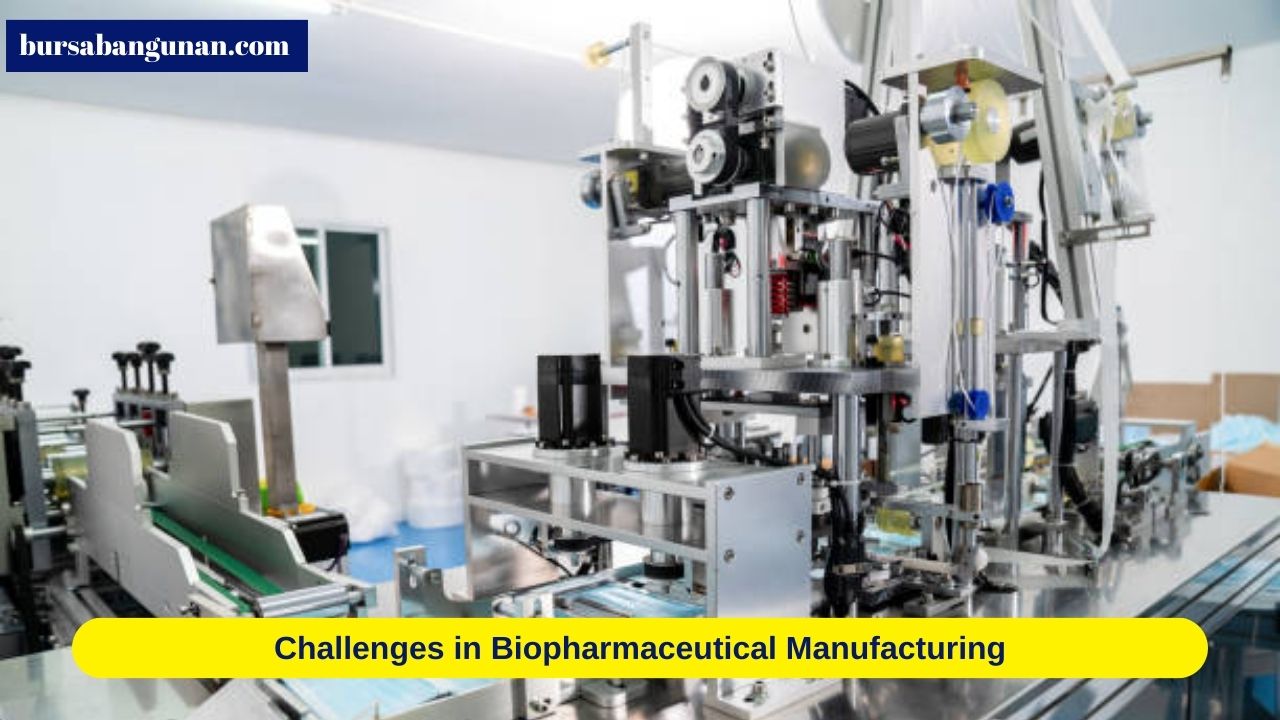
Biopharmaceutical Manufacturing Facilities – Biopharmaceutical manufacturing facilities play a crucial role in the production of biologically derived drugs, also known as biologics.
These facilities are designed to meet stringent regulatory requirements and adhere to Good Manufacturing Practice (GMP) guidelines to ensure the safety, efficacy, and quality of biopharmaceutical products.
Over the years, there have been significant advancements in biopharmaceutical manufacturing, driven by technological innovations, process improvements, and the increasing demand for biologics.
This article explores the key aspects of biopharmaceutical manufacturing facilities, including their design, processes, regulatory considerations, and the challenges faced by the industry.
Design of Biopharmaceutical Manufacturing Facilities

The design of biopharmaceutical manufacturing facilities incorporates modular layouts, cleanroom technologies, and advanced automation, aiming to optimize efficiency, ensure regulatory compliance, and meet the stringent requirements for the production of high-quality biologic drugs.
Facility Layout and Design Considerations
The design of biopharmaceutical manufacturing facilities is a critical factor in ensuring efficient and compliant production.
These facilities are typically designed with a modular approach to accommodate the complexities of various bioprocessing steps.
The layout should facilitate the flow of materials, personnel, and equipment in a manner that minimizes the risk of contamination and cross-contamination.
Cleanroom Design
Cleanrooms are essential components of biopharmaceutical manufacturing facilities to maintain a controlled environment.
The design of cleanrooms involves factors such as air filtration, temperature control, and pressure differentials. The goal is to prevent microbial contamination and ensure product quality.
Single-Use Technology
Recent advancements in single-use technology have revolutionized biopharmaceutical manufacturing facility design.
Single-use systems, including disposable bioreactors and tubing assemblies, offer flexibility, reduce the risk of contamination, and decrease turnaround times between batches.
This has led to a shift from traditional stainless-steel equipment to more modular and flexible manufacturing setups.
Equipment and Automation:
Biopharmaceutical manufacturing facilities are equipped with specialized equipment to support various stages of bioprocessing, from cell culture to downstream purification.
Automation plays a crucial role in improving efficiency, reproducibility, and data integrity.
High-throughput systems, robotics, and process analytical technology (PAT) are increasingly integrated into manufacturing processes.
Bioreactors and Fermenters
Bioreactors are core components of biopharmaceutical manufacturing, providing a controlled environment for cell culture.
Advances in bioreactor design include perfusion systems for continuous processing, enhanced monitoring capabilities, and integration with control systems for real-time adjustments.
Downstream Processing Equipment
Downstream processing involves the purification and isolation of the biopharmaceutical product from the cell culture.
Chromatography systems, filtration units, and centrifuges are examples of downstream processing equipment.
Continuous chromatography and other innovative purification technologies are being explored to improve efficiency and reduce costs.
Processes in Biopharmaceutical Manufacturing

Processes in biopharmaceutical manufacturing encompass sophisticated upstream activities like cell culture and fermentation, coupled with intricate downstream procedures involving harvest, clarification, chromatography, and filtration, collectively ensuring the production of purified, high-quality biologic drugs.
Upstream Processing
Upstream processing involves the cultivation of cells and the production of the desired biological product.
This phase includes cell culture, fermentation, and cell expansion.
The choice of cell line, media formulation, and bioreactor conditions significantly impact the yield and quality of the biopharmaceutical.
Cell Culture
Cell culture is a critical step in the production of biologics.
Mammalian, microbial, and yeast cells are commonly used depending on the type of biopharmaceutical.
Optimization of cell culture conditions, media composition, and bioreactor parameters is essential for achieving high cell density and product titers.
Fermentation
Fermentation is a key process for the production of microbial-based biologics. It involves the growth of microorganisms in a controlled environment to express and produce the desired therapeutic protein.
Monitoring and controlling parameters such as pH, temperature, and nutrient availability are crucial for successful fermentation.
Downstream Processing
Downstream processing focuses on isolating and purifying the biopharmaceutical product from the cell culture.
This phase involves multiple steps, including cell harvest, clarification, chromatography, and filtration.
Harvest and Clarification
Cell harvest involves separating the cells from the culture medium, followed by clarification to remove cellular debris and impurities.
Centrifugation, filtration, and depth filtration are commonly used techniques in this phase.
Chromatography
Chromatography is a critical step in downstream processing for separating and purifying the target product.
Protein A, ion exchange, and size exclusion chromatography are common methods used to achieve high purity and yield.
Filtration:
Filtration is employed to remove remaining impurities and particles from the biopharmaceutical product. Tangential flow filtration (TFF) and depth filtration are commonly used techniques in this phase.
Regulatory Considerations

Biopharmaceutical manufacturing is a highly regulated industry, and compliance with regulatory requirements is essential to ensure the safety and efficacy of products.
Regulatory agencies, such as the U.S.
Food and Drug Administration (FDA) and the European Medicines Agency (EMA), provide guidelines and standards that manufacturers must adhere to.
Good Manufacturing Practice (GMP)
GMP guidelines outline the minimum requirements for the design, monitoring, and control of biopharmaceutical manufacturing processes and facilities.
Compliance with GMP ensures that the products consistently meet quality standards and are safe for use.
Process Validation
Process validation is a key component of regulatory compliance in biopharmaceutical manufacturing.
It involves demonstrating that the manufacturing process consistently produces a product meeting predetermined specifications.
This includes validation of equipment, analytical methods, and critical process parameters.
Risk Management
Risk management is integrated into the design and operation of biopharmaceutical manufacturing facilities.
Manufacturers are required to conduct risk assessments to identify potential hazards and implement control measures to mitigate risks to product quality and patient safety.
Challenges in Biopharmaceutical Manufacturing

Despite the advancements in biopharmaceutical manufacturing, the industry faces several challenges that impact production efficiency, cost-effectiveness, and market competitiveness.
Cost of Goods
The cost of goods (COGs) for biopharmaceuticals remains a significant challenge.
The high expenses associated with raw materials, equipment, and facility operation contribute to the overall cost of production.
Continuous efforts to optimize processes, adopt cost-effective technologies, and explore alternative raw materials are essential to address this challenge.
Capacity Constraints
The increasing demand for biopharmaceuticals has led to capacity constraints in manufacturing facilities.
Balancing the need for flexibility with maintaining high production volumes poses a challenge for manufacturers.
Single-use technologies and process intensification are potential solutions to enhance production capacity.
Regulatory Complexity
The evolving regulatory landscape and the need for compliance with diverse international standards pose challenges to biopharmaceutical manufacturers.
Keeping up with changing regulations, ensuring consistency in global manufacturing practices, and adapting to new requirements can be demanding.
Supply Chain Vulnerabilities
Biopharmaceutical manufacturing relies on a complex global supply chain for raw materials, equipment, and consumables.
Disruptions in the supply chain, as observed during the COVID-19 pandemic, can impact production timelines and availability of critical components.
Future Trends and Innovations

To address the challenges in biopharmaceutical manufacturing, the industry is witnessing continuous innovation and the adoption of emerging technologies.
Several trends are shaping the future of biomanufacturing facilities.
Industry 4.0 and Digitalization
The integration of Industry 4.0 principles and digital technologies, such as artificial intelligence (AI) and machine learning (ML), is transforming biopharmaceutical manufacturing.
Real-time data analytics, predictive maintenance, and smart manufacturing platforms contribute to increased efficiency and process optimization.
Continuous Manufacturing
Continuous manufacturing is gaining momentum as an alternative to traditional batch processes.
Continuous bioprocessing offers advantages such as reduced production times, enhanced flexibility, and improved product quality.
Implementing continuous manufacturing requires overcoming technical and regulatory challenges but holds promise for the future.
Advanced Therapies
The emergence of advanced therapies, including gene therapies and cell-based therapies, presents new challenges and opportunities for biopharmaceutical manufacturing.
These therapies often require specialized manufacturing processes and facilities, emphasizing the need for adaptability and innovation.
Sustainable Practices
Sustainability is becoming a focal point in biopharmaceutical manufacturing.
Companies are exploring eco-friendly alternatives for disposable materials, optimizing energy consumption, and implementing green initiatives to reduce the environmental impact of biomanufacturing operations.
Conclusion
Biopharmaceutical manufacturing facilities play a pivotal role in meeting the growing demand for biologics, offering treatments for various diseases.
The industry continues to evolve, driven by advancements in technology, process optimization, and a commitment to regulatory compliance.
While challenges persist, ongoing innovations, such as Industry 4.0 integration and continuous manufacturing, are reshaping the landscape of biopharmaceutical manufacturing.
As the industry progresses, addressing cost concerns, enhancing flexibility, and ensuring sustainable practices will be crucial for the success of biomanufacturing facilities in delivering safe and effective biopharmaceutical products to patients worldwide.